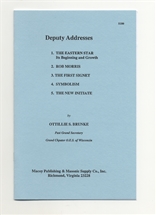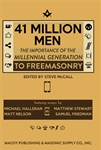Although many leadership guides have been used in
Freemasonry, there are very few that are actually written by a member of our
Order. Most of these handbooks are written for business and then retroactively
applied to the fraternity, but SIX FEATHERS OF LEADERSHIP is
written, not only with an emphasis on Masonic organizations, but by a brother
Mason.
Bro. Robert Keller holds a master’s degree in Educational
Counseling from Arizona State University and is a past master of King Kalakaua
Daylight Masonic Lodge in Hawaii. A member of the Scottish and York Rites, as
well as several other appendant bodies, Bro. Keller has used his experiences,
both professionally and Masoncially, to craft a leadership guide that echoes
Masonic principles. In the introduction to the book, he recognizes that apply
business principles, as most leadership manuals do, to a Masonic organization
is a non-sequitur.
To be effective as a volunteer organization
leader, one must recognize
that there is no paycheck.
The only hook is the satisfaction one gets from being
involved with the
organization, its successes and its people. All organizations
are in a very strong
competition for good, skilled volunteer leaders. And there
is nothing more defeating
than to see really qualified members depart because
of some stupid action on
the part of a supposed leader. Leaders in volunteer
organizations do not have
power. In fact, their power is derived solely from
those whom they manage. The
more those members believe in, relate to and are
respected by the leaders,
the more they will produce. The members must buy
into the goals, actually be
involved in setting them alongside the leaders, they
must also determine
appropriate rules for the operations leading to
accomplishment of those
goals, and they must have fun through positive
interactions with group
members as well while carrying out the tasks upon which
they have mutually decided.
SIX FEATHERS OF LEADERSHIP, is not your standard leadership book – it is a compact and thorough tour of leadership principles that can be applied to Masonic organizations and produce dramatic results, the key to which is earning and building on mutual respect between leaders and followers, which is a core foundation of Masonic teaching.






